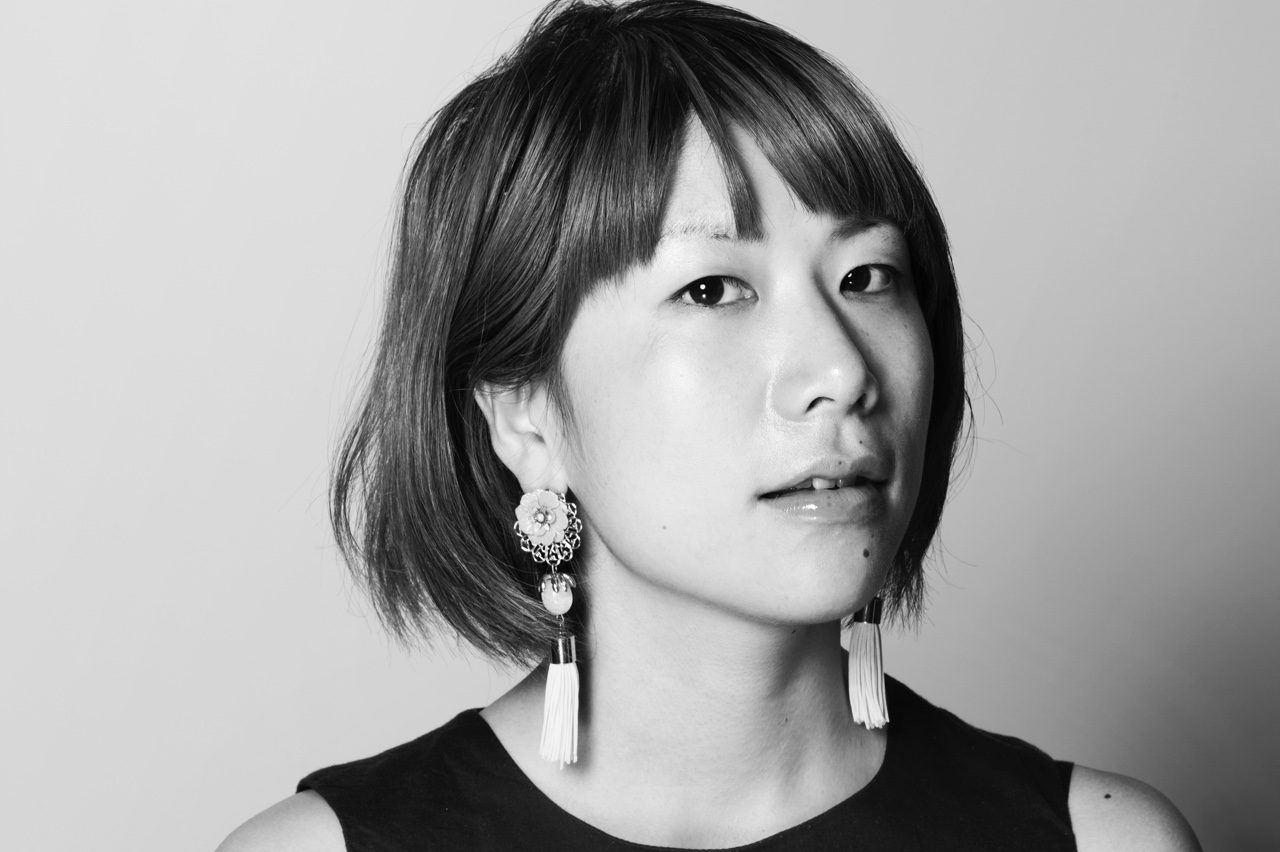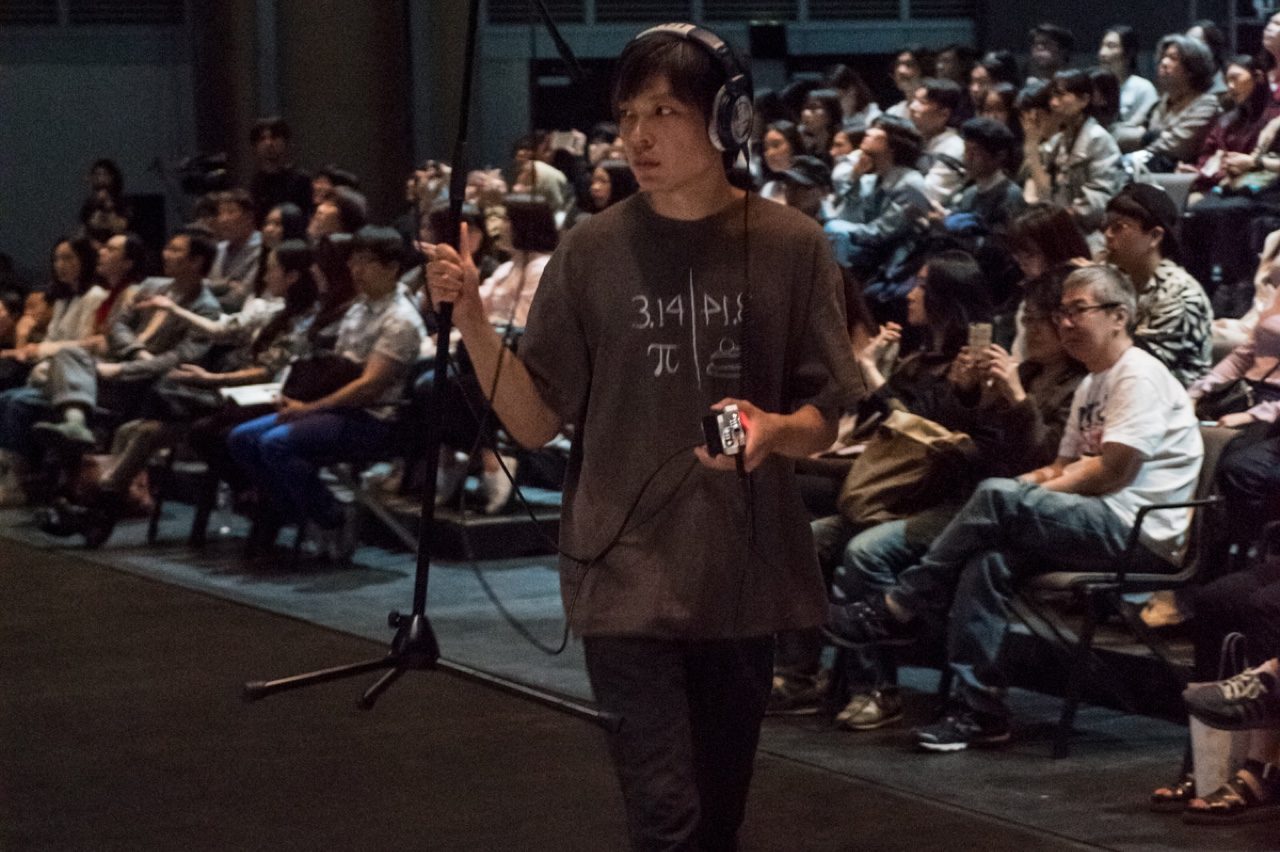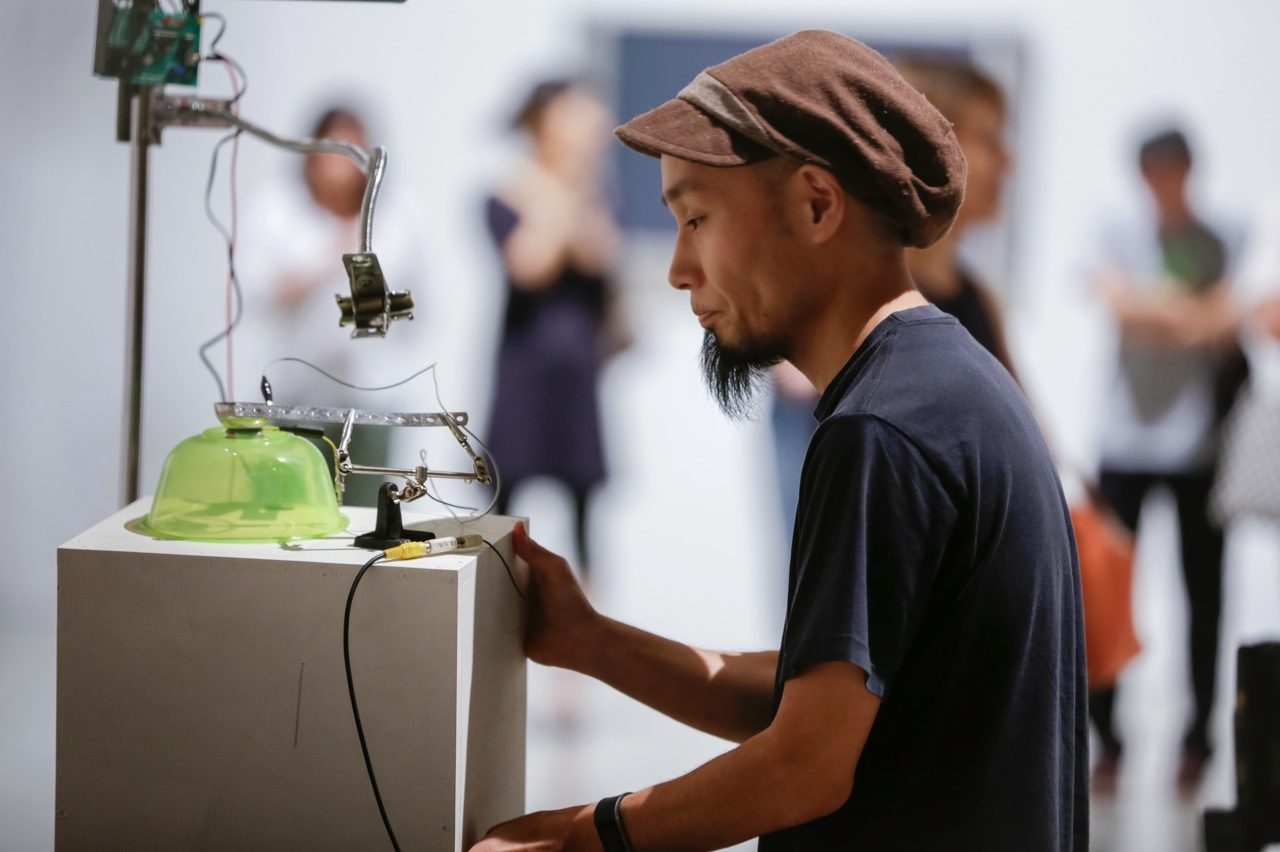A Side Story around the Sapporo International Art Festival 2017A World Born from a Single Record of Noise Music
My Starting point and Numayama Yoshiaki
My favorite thing when I was a preschooler were parties held almost every weekend at my mother’s family house in the old downtown area of Yokohama. With neighbors even joining the parties, we sang songs of Sakamoto Kyu, did the Sudarabushi dance and enjoyed delicious food. There was sake for adults, TV and popular music from a donut-shaped record, and there were smiling faces everywhere. These weekend parties were my starting point as a musician without a doubt.
After that, I moved to Fukushima, and I thought of nothing but becoming a musician after meeting free jazz in my teens. Then I went to Tokyo and became a disciple of Takayanagi Masayuki, who pioneered free jazz in Japan. That was when Mr. Takayanagi made a transition from free jazz to noise. This change became dramatically apparent in the 1984 Hokkaido tour, which was planned by Mr. Soejima Teruto, who was an avant-garde jazz critic and organizer. I joined the tour as an assistant and driver, and I was affected by the change of Mr. Takayanagi more than anyone. The encounter with Mr. Numayama Yoshiaki, who organized the Sapporo performance, held a major significance for me. Mr. Numayama spent his own money to introduce avant-garde music and organize concerts in Sapporo (he also organized my concerts many times). I was immensely affected by his sincere nature, way of life and serious attitude toward music. His presence was a great encouragement to me
Christian Marclay
Not only music, I learned the fun of art – art in a broad sense – in 1985, when I encountered a record by Christian Marclay called Record without a Cover. The record actually didn’t have a cover, but was still in the record shop. The first half of the record was almost silent but noises, and it was difficult to determine whether they were recorded noises or real noises from scratches on the record. This record full of noises stimulated the brain of a music geek (me) immensely. What was the music we listened to? That was made of just scratches on the record. What does playing music mean in the first place? What is recording? What is media? A single record full of scratches made me think about where I stood, and I felt that an unknown, extraordinary world came into sight. This was my first encounter with art.
I wished to meet Marclay. This dream came true earlier than expected. In 1987, Marclay came to Japan for the first time. He is now known worldwide, but in those days, he was just becoming known as a turntablist. His performance in Sapporo was organized by Mr. Numayama. Incidentally, he spent his first night in Japan at my small apartment. He may have found it annoying, but I was thrilled.



Mohri Yuko, Umeda Tetsuya and Horio Kanta
In the 1990s, I began to improvise with turntables and the guitar in various parts of the world, had opportunities to perform with Marclay, and produce soundtracks for movies and TV shows after composing music for a Chinese film. In those days, I intended to become an expert in the professional world. However, a significant turning point came in 2005, when I participated in Otoasobi no Kai, an improvisation group with children who have disabilities in Kobe. My style of music was not accepted here. I was at a loss as to what to do, but children were playing music happily. I was stuck. I realized that my commitment to music was nothing compared to the sound produced by children. It was then I began to think of creating music with people I have met in any way, whether they are professionals or amateurs, or adults or children.
The year 2005 was also a year when I received a life-changing impact from a group exhibition of then-unknown young artists. Mohri Yuko, Umeda Tetsuya and Horio Kanta. When I happened to see their exhibits in Osaka, I was stunned. Although they were exhibits, they were constantly changing and didn’t look like art works at all. A giant coil-like magnetized object automatically generated power and emitted radio frequency radiation. The acoustic phase around a huge balloon changed strangely, making me feel stuffiness in the ear as if I was at high elevation. Sound-related phenomena occurred, and the exhibits were just interesting.
Is this completely new music? Or is it a completely new situation?
Children with disabilities and a mysterious exhibition. These two encounters made me feel like an unoperated part of my brain had suddenly been activated. They had much more impact on me than when I encountered Marclay’s uncovered record. As a result, I couldn’t help doing something, and so I collaborated with many people to organize numerous projects and exhibitions, including Without Records and Ensembles as well as impromptu orchestra performances with ordinary people. The details are described in my recent book Ongaku to Bijutsu no Aida (lit. Between Music and Fine Art). Please read it.
O-furoshiki (large wrapping cloth)
When I thought that I had done almost all I wanted to do, the Great East Japan Earthquake occurred in 2011. I suspended all activities and immediately went to Fukushima, a place where I grew up. I got together with many others to launch a project, and after much debate we decided to hold a large festival. As a radiological countermeasure, a large furoshiki was made by sewing many pieces of cloth together and spread in the venue. An orchestra was formed with people who had never played instruments, and a Bon dance was also held. Meanwhile, I produced music for Amachan, NHK’s morning drama series, and also organized the Bon dance in Sapporo with people who had relocated from Fukushima. These were not the opposite of what I had done. It was like all the elements of what I had done swirled and approached me. I think these activities eventually led to the offer from the Sapporo International Art Festival.
Tenniscoats
When I began to plan the festival, the duo Tenniscoats were the first artists that came to mind. They try to do or create something unique during their shows, involving people around them rather than showing a finished work or accomplishing something. After the 2011 earthquake, their activities seemed to me like a small lighthouse that shines in the dark. There is something that is barely visible in the direction that they cast light over, and it is very difficult to put it into words. However, it seemed to be the same as the shine of children in the Otoasobi no Kai group (which you cannot see in the professional world), the music version of the mysterious exhibits that I saw in Osaka in 2005, and the answer to the question “How do we define an art festival?” I wish to hold an art festival like them.
I plan to have Tenniscoats stay in Sapporo and act freely during the festival. It will be great if they ad-lib at the art festival and share what they see with local residents.
Giving more thought to “how do we define ‘art festival’?”
In the first place, I thought the answer to this question was that art works got together to create a festival. However, I rethought the event halfway through. That is, art is something we learn when we are organizing a festival with our own hands. This may be closer to what art should be. It is like the O-furoshiki Project, which started from the furoshiki placed in the venue out of necessity in Fukushima after the 2011 earthquake, or something that is visible beyond the light cast by Tenniscoats.
I didn’t expect at all that a noise music geek who had long loved Sakamoto Kyu, become caught up in free jazz in high school and had life-changing encounters with Mr. Takayanagi, Mr. Numayama and Mr. Christian Marclay would sew large furoshiki with other people and hold the Bon dance 30 years later. Encounters with people, music and art as well as the earthquake, the festival and everything have shaped my life. Everyone has their own history, and such people get together in chaos and experience a festival beyond time while smiling. This is my image of an art festival.
As described here, the O-furoshiki Project, Sapporo Collective Orchestra with local children, art works created by Christian Marclay, Mohri Yuko, Umeda Tetsuya and Horio Kanta, and Mr. Numayama’s archive are projects derived from my personal history. I now think that I should make use of these elements rather than keeping them in my history, and create mechanisms that cause chemical reactions to happen to viewers, thereby giving the art festival life. I got clues for this idea from the beginning of Moerenuma Park, a cultural asset in Sapporo, the history of Mr. Numayama’s activities in Sapporo, and what the Retro Space Sake Hall has done over a long period of time.
My world was born from a single record of noise music. If such personal experiences react chemically with Sapporo, and if the same number of chemical reactions as people participating in this festival get together, an art festival unique to Sapporo will happen.

